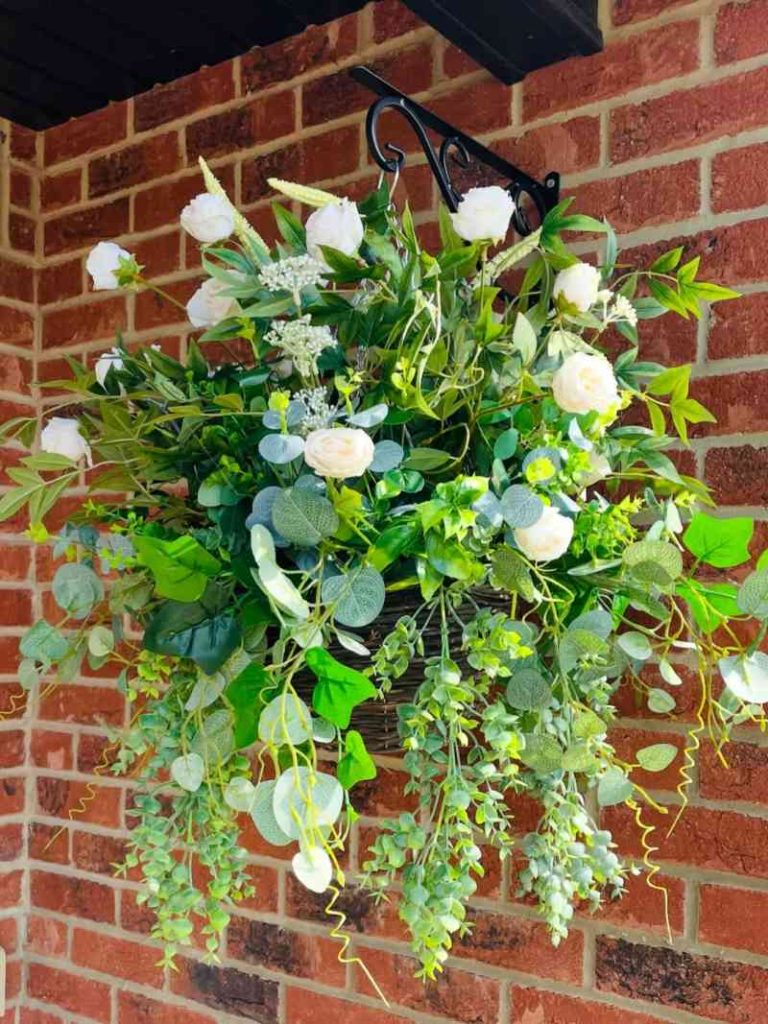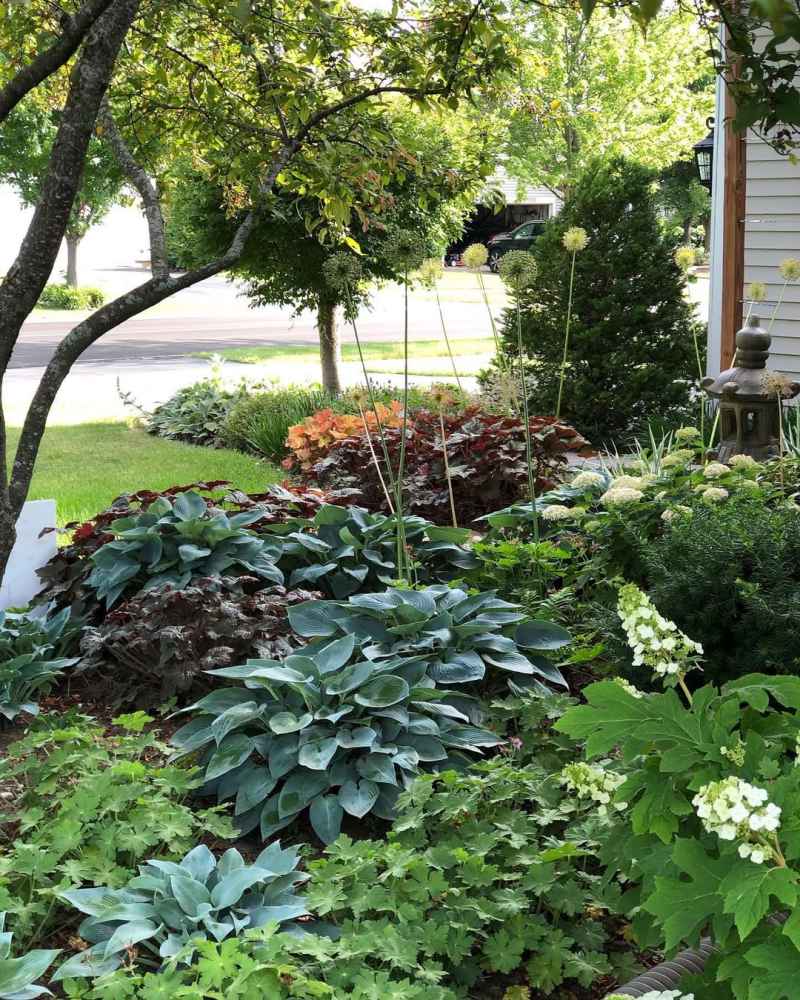When backyard is filled with composting bins, veggies and other cold hardy plants, don’t you think a gardener’s front yard must welcome guests with a climbing perennial on an arch paired with red bougainvillea and pansies brightening the entry.
As the summer heat is gone, you’ve an opportunity to start fall gardening by adding few creative touches to your landscape.
After all gardening isn’t just to feed yourself, it has ability to nurture your soul with vibrant thoughtful designs.
If you’re eager to try your green thumb in autumn, then these front yard fall flower bed ideas can uplift your spirit as a gardener.
Increase Curb Appeal
Researchers states that enhanced curb appeal of a home can increase its resale value by 7%.
So, it isn’t just about aesthetics, decorating your front yard with flowering beds can benefit you economically.
You don’t have to go big all the time.
Small tweaks here and there can illuminate your lawn, making the evening dinner delightful.
Go simple at first, like adding bird feeders, planting flowers that attract birds and cleaning lawn.
Plants like camellia, aster, cyclamen, pansies and hellebores can survive mild winter, so, you can include them in your front yard flower beds.
13 Beautiful Front Yard Flower Bed Ideas
When it comes to landscaping, even small changes can completely transform your front yard.
A curvy path lined with flowers, a pop of color near the porch, or a cluster of native plants can instantly elevate the aesthetics.
These little touches don’t just add curb appeal—they create a warm and welcoming atmosphere for both guests and homeowners.
1. Create a Curvy Path

Instead of straight walkways, add a curvy path that naturally guides the eye through your front yard. This shape softens the overall look and feels more inviting than rigid lines. A winding path creates a sense of discovery as guests walk toward your home.
Lining the edges with low-growing flowers like alyssum, lobelia, or dwarf marigolds enhances the effect. These blooms highlight the curves and give the impression that the path is wrapped in a ribbon of color. Adding mulch or gravel keeps the area neat and well-defined.
For a finishing touch, consider solar-powered lights along the bends. In the evening, the illuminated path not only improves safety but also makes your flower beds glow beautifully.
2. Beautify Your Front Yard with Heleniums

Heleniums, also called sneezeweed, are a fall-blooming perennial that brings fiery reds, oranges, and yellows to the landscape. Their daisy-like flowers bloom late in the season, making them perfect for adding vibrancy when many other plants are fading.
These hardy flowers thrive in full sun and pair wonderfully with ornamental grasses. Plant them in clusters near entryways or along fences for maximum visual impact. Their bright hues naturally draw attention and set a cheerful tone for the season.
Another bonus is their appeal to pollinators. Bees and butterflies love heleniums, so planting them supports local wildlife while enhancing the front yard’s charm.
Also Read: 12 Low Budget Backyard Designs with Gravel
3. Accent Your Front Porch

The front porch is often the centerpiece of a home’s curb appeal. By adding flower beds or potted plants around it, you can instantly create a warm and welcoming entry. Consider symmetrical arrangements with matching planters on either side of the steps for a balanced look.
Seasonal flowers like chrysanthemums in fall or geraniums in summer work beautifully in porch displays. You can also combine flowers with ornamental grasses or shrubs to add height and depth. This layering gives your porch area a polished yet cozy feel.
Don’t forget hanging baskets near the porch columns or railings. They add vertical charm and soften the architectural lines, blending the house and garden seamlessly.
4. Create a Flagstone Path
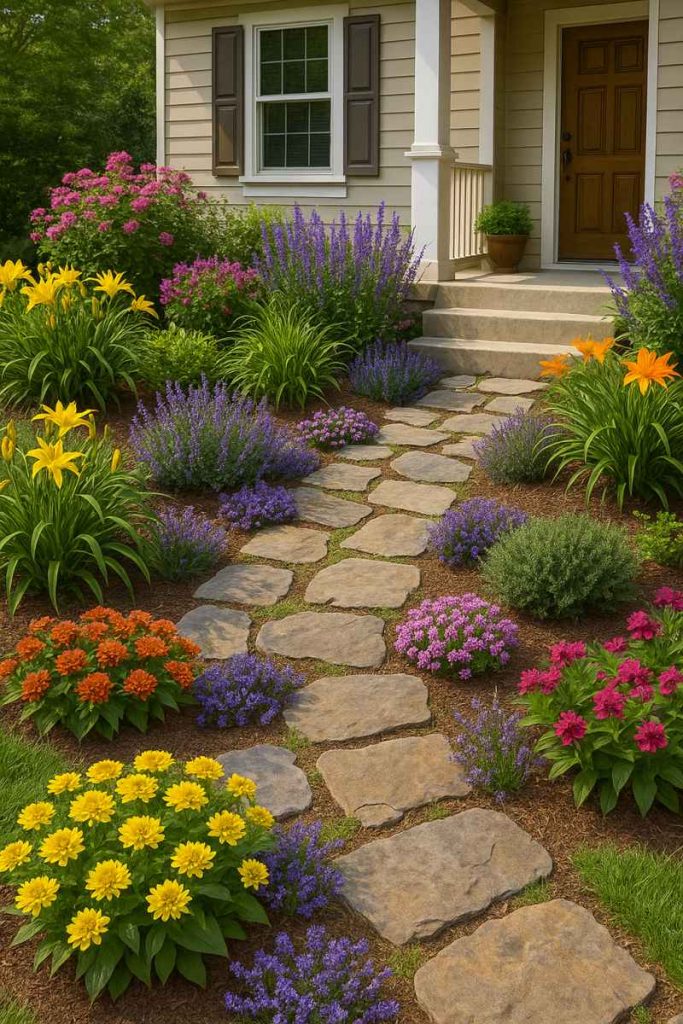
Flagstone paths bring a rustic, natural look to the front yard. Their irregular shapes give character and charm, making them perfect for cottage-style gardens. Surrounding the stones with small flower beds enhances the walkway’s beauty.
Plant creeping thyme, lavender, or dianthus between the cracks for a fragrant, colorful touch. These plants thrive in the narrow spaces and spread gently without overwhelming the stones. Every step guests take is accompanied by pleasant aromas and bursts of color.
To elevate the look, border the flagstone path with larger perennials like daylilies or salvia. This creates a layered effect that makes the walkway stand out as a focal point.
5. Grow Lots of Colors
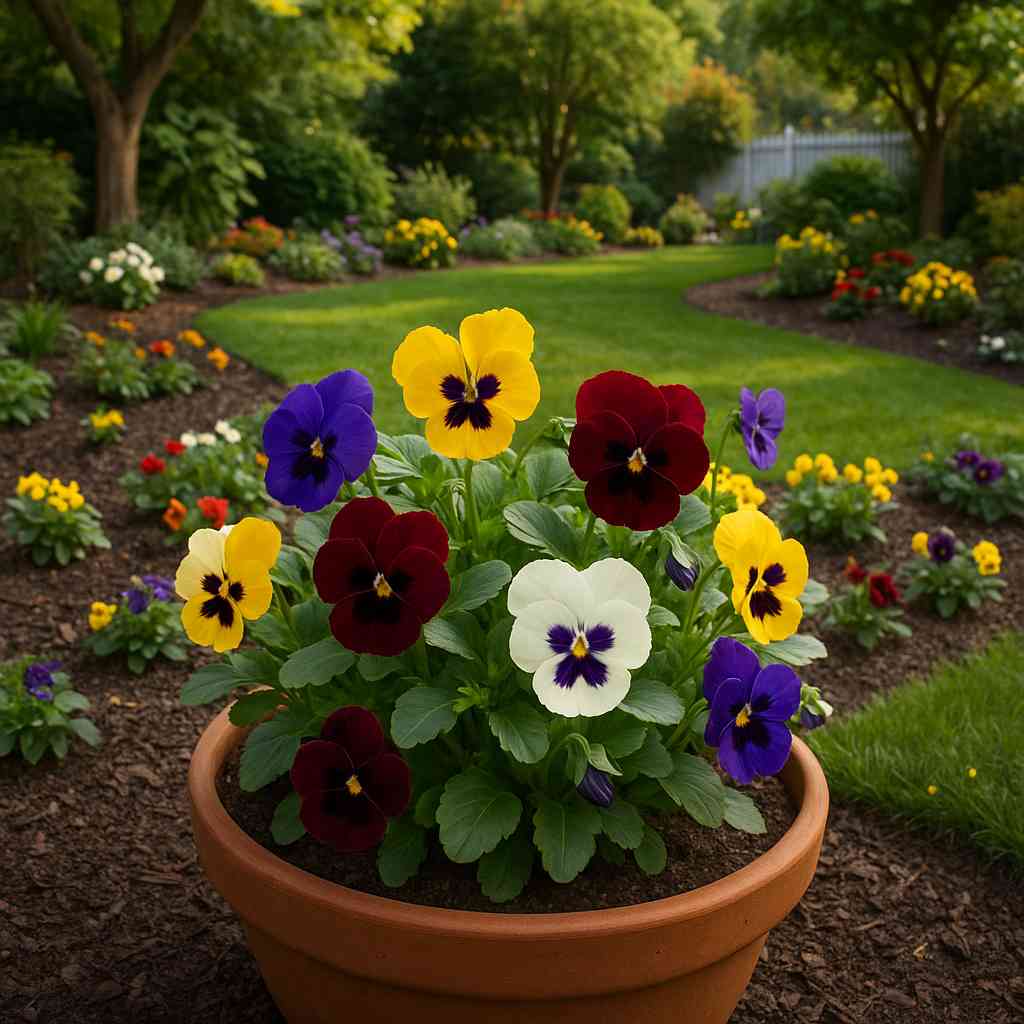
Color is the simplest way to make your flower beds eye-catching. A mix of bold and subtle tones can transform even a small yard into a vibrant showpiece. Choose a variety of seasonal flowers so your beds remain colorful year-round.
For example, pansies and violas thrive in cooler weather, while zinnias and salvias provide bright shades in summer. Combining warm hues like reds and yellows with cool tones like blues and purples creates balance and prevents clashing.
If you prefer a softer look, try a monochromatic scheme with varying shades of one color. This still creates depth while maintaining a more elegant, cohesive appearance.
6. Make the Yard Appealing with Different Sizes
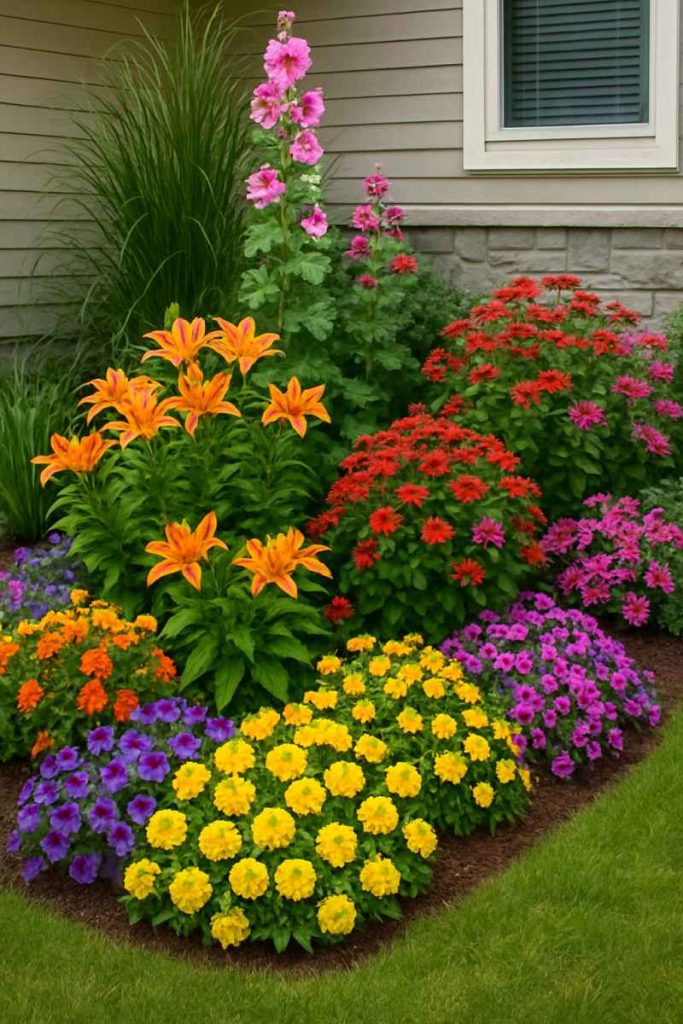
Mixing plant heights and textures gives flower beds a layered, professional look. Place taller plants such as hollyhocks or ornamental grasses at the back, medium-height blooms in the middle, and groundcovers at the front. This tiered arrangement ensures every plant is visible.
Using different sizes also adds depth, making small yards appear larger. Taller plants create a natural backdrop, while cascading flowers like trailing petunias soften the edges. The contrast in heights makes the beds look dynamic rather than flat.
To keep the design organized, stick to odd-number groupings—three tall plants grouped together look more natural than two. This small design trick keeps the yard visually appealing.
7. Go for a Wild Look
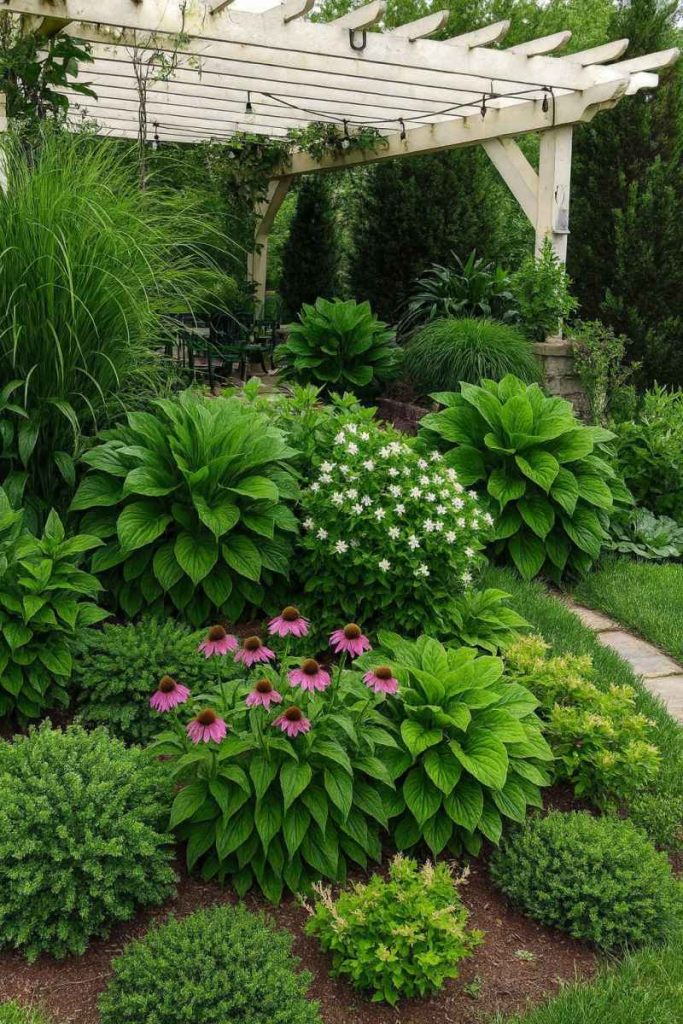
Not all front yards need to be neat and orderly. A wildflower-inspired design gives your home a natural, meadow-like charm. Mixing daisies, coneflowers, black-eyed Susans, and native grasses creates a free-flowing style.
The wild look is also low-maintenance. Once established, wildflowers reseed themselves, requiring minimal replanting. They also attract pollinators like bees and butterflies, which adds life and movement to the garden.
To avoid the space looking messy, add subtle structure with edging stones or a small pathway. This balances the wild beauty with a touch of order.
8. Use Native Plants

Native plants are adapted to your local climate, which makes them both eco-friendly and easy to maintain. They require less water, fertilizer, and care compared to non-native species. Plus, they provide essential habitats for local birds and insects.
Incorporating native perennials like coreopsis, bee balm, or asters ensures your flower beds bloom naturally with the seasons. Their resilience means they’ll return year after year without much intervention.
Planting natives also connects your yard to the surrounding environment, making it feel more harmonious with the local landscape.
9. Employ Raised Beds
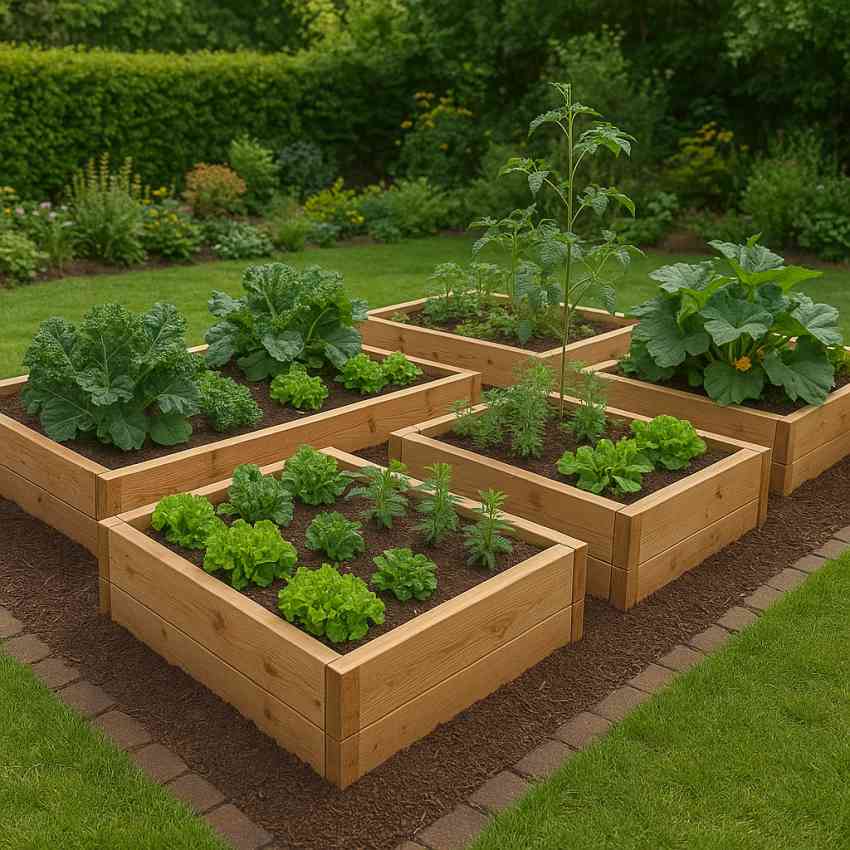
Raised beds add definition and structure to flower beds, while also improving drainage and soil quality. They are especially useful if your native soil is too sandy or clay-heavy for delicate flowers.
Wood, stone, or brick-edged raised beds can be styled to match your home’s architecture. They also make gardening easier since you don’t have to bend as much to tend to the plants.
Fill raised beds with seasonal flowers for maximum impact. In fall, pansies and ornamental kale are excellent options, while spring tulips and daffodils brighten the beds after winter.
10. Hanging Baskets
Hanging baskets bring flowers to eye level and add vertical interest. They are perfect for porches, pergolas, or even along fences. Trailing plants like ivy geraniums or petunias create a cascading effect that feels lush and full.
The great thing about hanging baskets is their versatility. You can change them seasonally—fill them with pansies in fall, petunias in summer, and evergreen sprigs in winter. This keeps the front yard looking fresh year-round.
They also work well in smaller spaces where ground planting isn’t possible. A few strategically placed baskets can brighten dull corners instantly.
11. Trellises
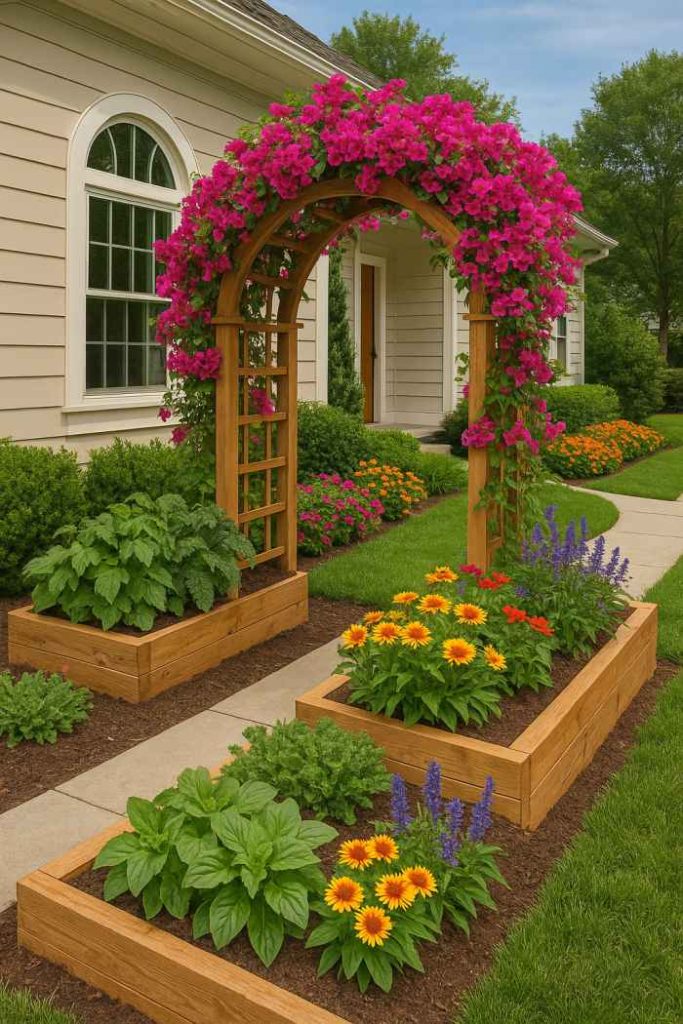
Trellises add vertical drama to front yards by showcasing climbing plants. Whether you use a simple wooden design or a decorative metal frame, trellises instantly make your garden feel taller and more structured.
Bougainvillea, clematis, and morning glories thrive when trained on trellises. Their upward growth saves space while filling the vertical plane with greenery and blooms. Placing trellises at entrances or alongside pathways creates a natural archway effect.
To soften the look, add smaller flower beds at the trellis base. This way, you get both vertical and horizontal beauty in one design.
12. Make the Front Yard Lushy with Green Plants
While colorful blooms are beautiful, green plants bring texture, freshness, and a soothing feel to the landscape. Ferns, hostas, and ornamental grasses are excellent choices for lush foliage.
A bed filled with greenery provides a calm backdrop against which seasonal flowers pop even more. It also ensures your yard looks alive year-round, even when flowers are out of season.
You can mix shades of green—deep emeralds, bright lime, and variegated patterns—for extra depth and contrast without relying on flowers alone.
13. Plant Croton for Fire Tones
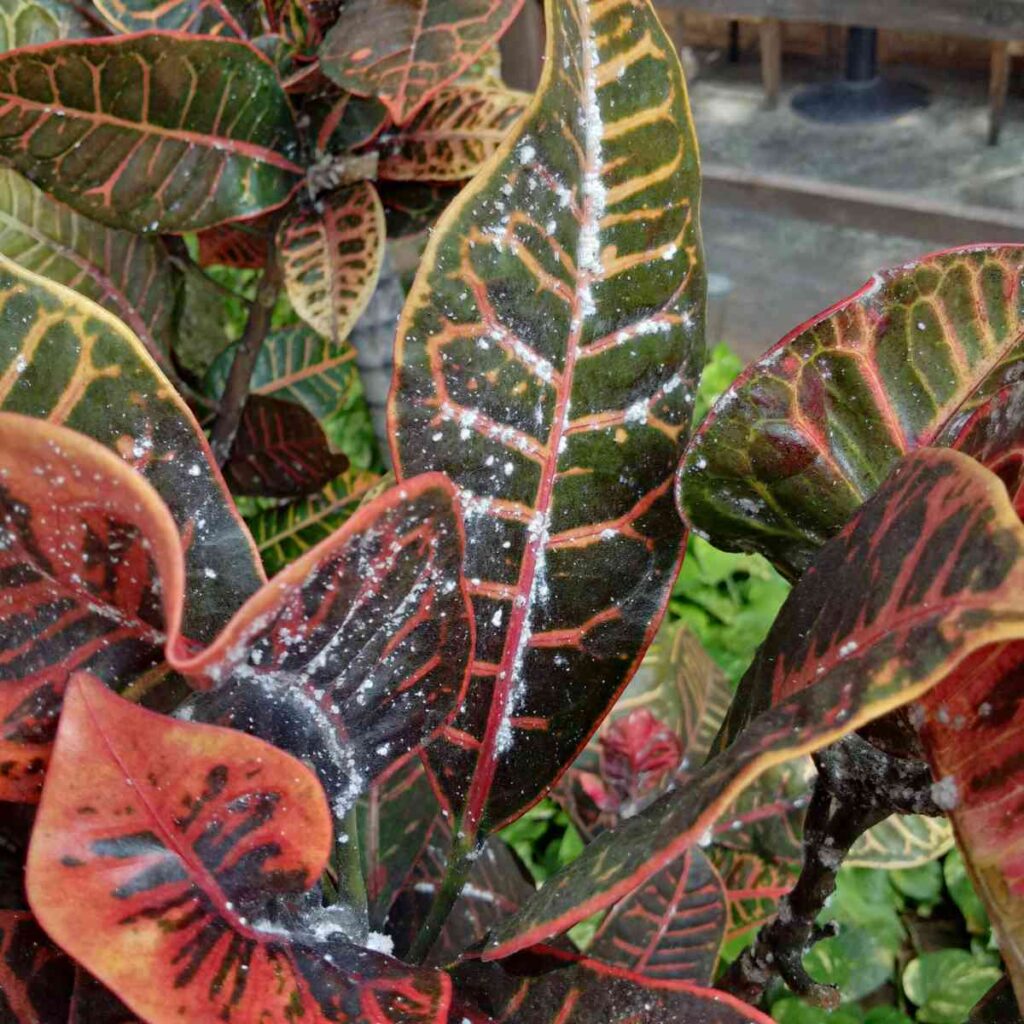
Crotons are known for their bold, fiery foliage that ranges from red and orange to yellow and green. Unlike seasonal flowers, their color comes from leaves, which last year-round in warm climates.
Planting crotons near entrances, walkways, or in pots makes them instant focal points. Their dramatic tones are especially effective in fall, blending beautifully with seasonal flowers.
Crotons also pair well with green plants. Their vivid hues stand out against calmer backgrounds, ensuring your front yard always has a striking element.
Conclusion
Transforming your front yard doesn’t require a complete overhaul—sometimes, it’s the small, thoughtful touches that make the biggest difference.
From curvy paths lined with cheerful flowers to raised beds, hanging baskets, and bold foliage like crotons, each idea adds character and charm in its own way.
Whether you prefer a structured look or a natural, free-flowing style, these front yard flower bed ideas will help you create a space that welcomes guests and brings daily joy.

Khaja Moinuddin, a computer science graduate, finds joy in gardening and homesteading. Join him on this blog as he shares his experiences in homesteading, gardening, and composting
